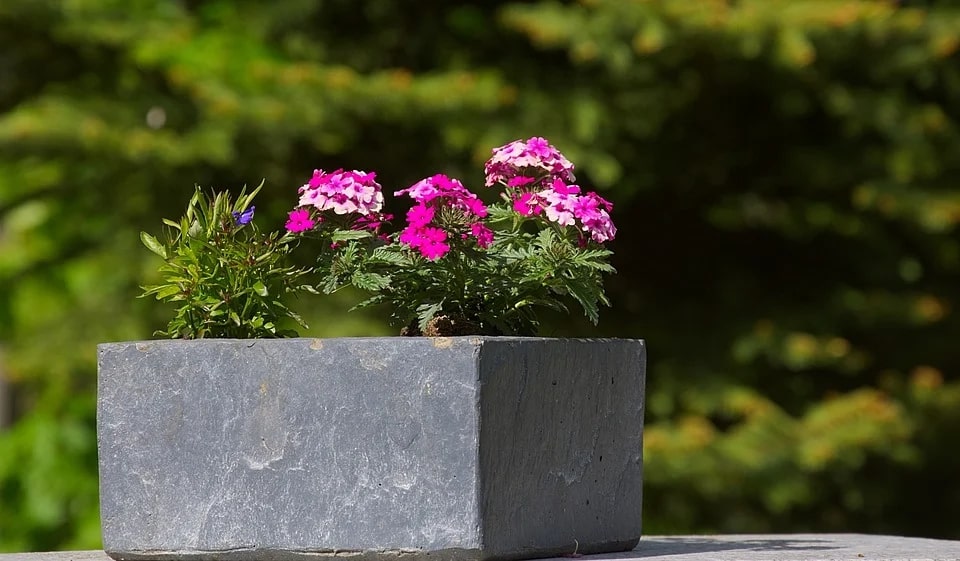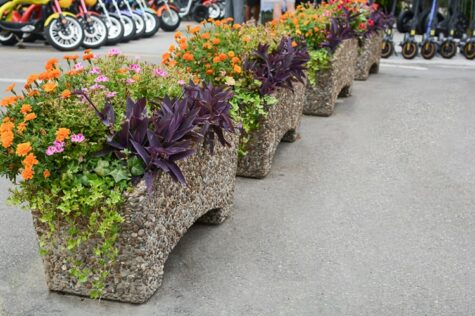There are few things more satisfying than growing and picking your own home-grown vegetables, tasty salads, herbs, tomatoes or cucumbers.
With increasing concerns about the environmental impact of the food we buy in supermarkets and the harmful pesticides used in conventional farming, there’s never been a better time to grow your own food.
Not only will you lower your carbon footprint, but the results are truly tasty! Here in the UK, you’ll need to take the often unpredictable weather into account when growing your own veg. Read on to learn how to build a planter box for vegetables and discover the kinds of food that you can grow throughout the year.

Create your own kitchen garden with vegetable planter boxes. Image courtesy of @ourclapboardhomebythesea
Types of vegetable box planters to consider
A wooden planter box supported by a south-facing wall will provide sunshine, warmth and shelter for many vegetables suitable for the British summer (or winter). The wall retains the heat, which many of your vegetables will enjoy. If it is close to the water supply, even better, because herbs and most vegetables get thirsty when it’s hot.
Raised planter boxes are great for anybody who has an issue with bending for too long and the extra height makes easy access for wheelchair gardeners. They are a permanent fixture in a garden so check the conditions list below before you finalise the location! The construction of these boxes takes some time and skill so ensure you have a DIY person or carpenter on hand to help if needed.
Patio or balcony planter boxes can be built to suit the size available. Measure your space and allow a reasonable depth for most vegetables – a minimum of 1 foot (30cm) but preferably 2 feet (60cm) for larger vegetables like squash, cucumbers and potatoes.
A window vegetable planter box is fantastic if you don’t have a lot of space. So if you’re new to this gardening thing, why not try a window box first?
- In summer outdoors, try planting tomatoes, herbs, salads and carrots. If the pot is deep enough (at least 1 foot) you can plant peas too but these will need some kind of support to climb. Add bamboo canes or an obelisk before you plant the peas so that you don’t disturb the roots when they start growing.
- In summer indoors, tomatoes are fantastic, accompanied by herbs like basil and coriander. If you’re feeling adventurous start an aubergine indoors. Aubergines are fussy plants that need a lot of TLC but are well worth a try if only for the beautiful purple flowers. You can re-pot the plant outdoors when the summer sun shines brightly and all danger of frost is gone.
- In winter indoors, a lot depends on how much light your planter box receives but you can grow chives and spring onions, salad leaves and some herbs.
- In winter outdoors, cabbages and other brassicas are quite frost hardy so you could place the planter box on the outside of your house if you prefer, hanging from your window ledge. This will get watered by rain too, which is really good for most vegetables. Onions and garlic are another good bet – they don’t mind cold weather!

Consider using a combination of raised planters and pots for different vegetables. Image credit: @victorygardenla
Conservatory planter boxes
In summer, a planter box in a conservatory has everything – the sun, warmth, shelter, regular watering by you, and respite from pests (except pesky red spider mites).
Pots and grow bags are useful for those with very little space. Plants that grow well in pots include tomatoes, cucumbers, aubergines, summer salads, herbs, and carrots. Even beans can grow in pots and grow bags but you will need bamboo canes or trellis for them to climb and to keep them tidy and off the ground.
The soil can be changed annually so that it doesn’t get exhausted and you can even create your own crop rotation plan. (See more on this below.)
How do I build a raised planter box?
To make your planter box, first source your materials. Wood planters can be made from re-used pallets, decking or visit your wood supplier with the measurements of the area where your box will be located.
Vegetables are hungry plants so plan a deep box, say at least 1 foot (30 cm) deep. Make it deeper if possible. If you like growing the first year, you may decide to keep going and the deeper the planter box, the better for vegetables.
Think about adding a liner and drainage for the planter box because the water will need to drain away or the wood may rot.
Plastic is waterproof but you will need to ensure good drainage too. You can also buy architectural matting and coir liners. Coir is made from coconut fibre; it is tough and durable and comes from a natural source, which plants usually prefer to plastic.
Add some pebbles at the end of a deep planter to help drainage and keep the plant roots above this layer. Some gardeners use activated charcoal to help drainage too.
DIY Planter box plans to help you construct your vegetable planters are available to download online. Some of my favourites include:
- Construct101 on Pinterest DIY offers raised bed planter plans which are available to download for free. There’s really helpful information to guide you in constructing your new vegetable raised planter bed.
- From DIY Montreal, you can download plans to make a slatted raised planter box, with instructions. The planter box is approximately 5 feet x 2 feet wide and 3 feet.

Enjoy the good life with a steady supply of home grown vegetables. Image credit: @norikoinri
Waterproofing your vegetable planter box
You will need to use something to protect the wood unless it has already been treated. When you buy your wood, check with the supplier to see if it’s been treated and if not, ask for help with choosing the most suitable protective varnish, paint or oil. Most treatments need to be repeated annually.
If you are lining the planter box there is no need to worry about contamination of the soil with these products. If you are not lining the box, ensure that the coating is thoroughly dried before adding your soil.

Give your planter boxes several coats of protective varnish before filling with soil. Credit: Shutterstock
When your planter box is ready to fill, read our what to grow in a vegetable planter box article for some great ideas and tips. You’ll be harvesting baskets of delicious vegetables in no time!

Save this pin for later






